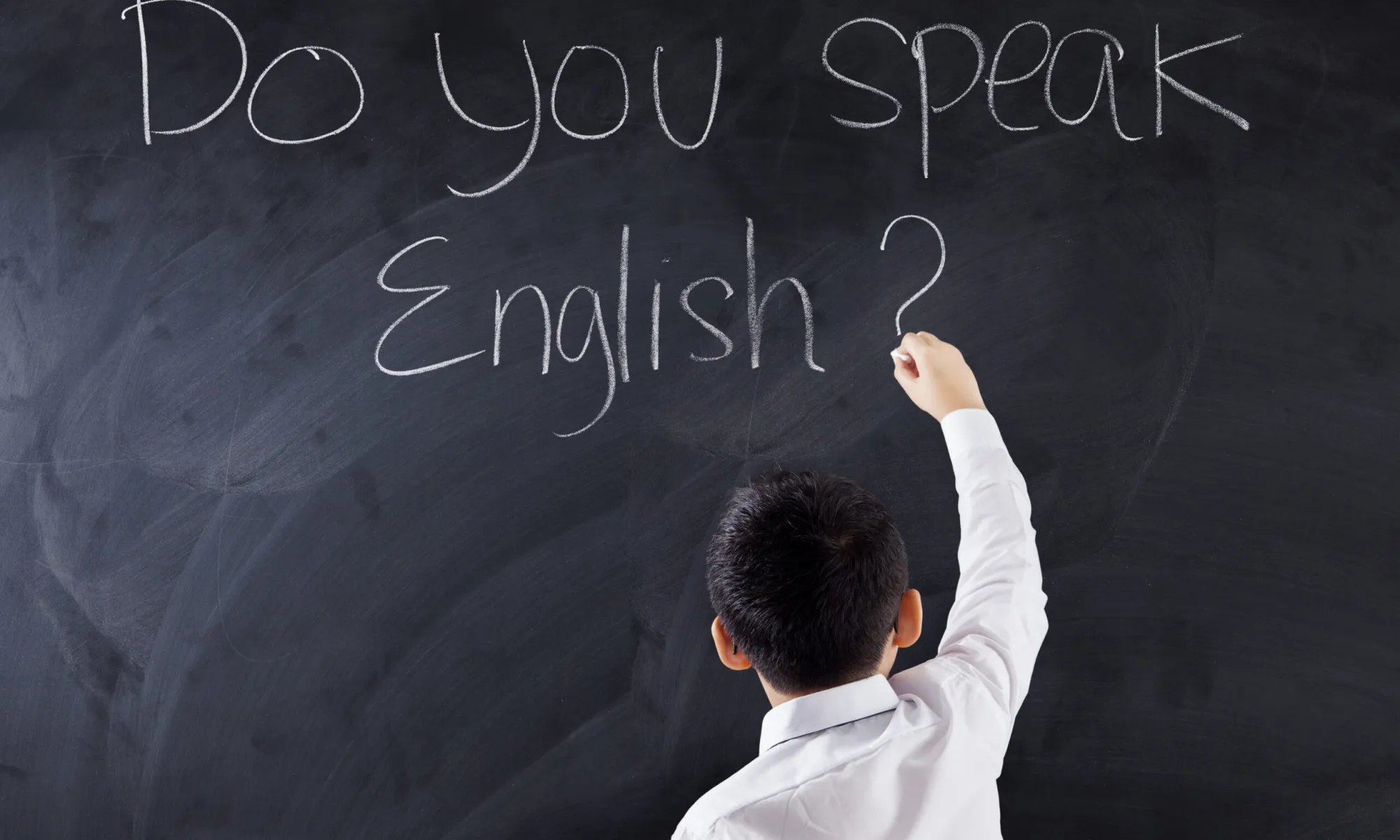- Why is it Important to Teach Children to Hear Correctly in English?
- How to Teach Children to Hear Correctly in English?
- How to Work on Developing the Correct Pronunciation in Children?
- So, let’s Summarise
The key objective of learning English is to be able to comprehend speech and make yourself understood in English. At the same time, it is mistakenly assumed that the key to comprehension is sufficient knowledge of vocabulary and grammar.
The reality is that the phonetic aspect of communication comes first, because difficulties in communication, especially at first, occur not because you don’t know the meaning of some words or misunderstand the meaning of phrases and statements, but because you’re unable to hear, divide the sounding stream of speech into semantic units, to single out key, significant words from it.
Thus, the key to successful communication is developed auditory and pronunciation skills, i.e., on the one hand, the ability to correctly articulate both individual English sounds and their combination in words and phrases, on the other hand, the ability to single out and hear them in speech of the interlocutor, for which a developed phonemic hearing is responsible.
In this regard, teaching oral communication is of high priority in mastering a foreign language, especially if the learners are children. Why? Let me explain. The thing is that before reaching the age when a child learns to read and write, i.e., until about 5-6 years old, the only way for a child to communicate in their native language is verbal communication.
It is during this period that the articulatory base of the native language is formed and, if necessary, the formulation and correction of sounds that cause pronunciation difficulties for individual children takes place. As a rule, specialists who work with children try to ‘establish’ the correct work of the pronunciation apparatus before they start school, until the moment when, in addition to the oral form of communication, children actively begin to get acquainted with written language.
Uncorrected or residual oral speech problems will instantly surface in writing: if a child has not learned to articulate sounds correctly, it means that they will not be able to distinguish them by ear and, therefore, will have difficulties choosing the correct letters for these sounds and further spelling the words.
Speaking First
The same is true about learning English! If the oral course is structured correctly, then its content is aimed at creating a reliable base, which in the future will form the basis for teaching children to read and write, i.e. full mastery of the English language. But in no case is it the other way around: first reading, then speaking. You cannot expect children to speak English if they cannot speak their native language. If children are asked to read or write in English too early, learning to read in the language becomes tedious and unpleasant.
Therefore, children should acquire fairly good oral communication skills in English before they learn to write and read in that language. Only when their hand-eye and spatial coordination are sufficiently developed and they understand what they are reading, are they able to learn to read in English fairly quickly and confidently. They will also be able to read aloud with good pronunciation if they are able to identify words on the page with words they have already heard. If reading is enjoyable, children will feel motivated to read more and write later. If they can express their thoughts, then writing will be a creative process for them, not a mechanical task.
Why is it Important to Teach Children to Hear Correctly in English?
English, like any other language, begins with learning to hear. A child cannot yet pronounce a single word, but they understand that their parents are addressing them: children at a very early age hear their name and distinguish intonation. Until the moment they begin to speak fully, they understand all the appeals addressed to them. As a matter of fact, they also first learn to hear what they say, and they begin to speak through imitation of adults, repeating what they heard.
The period of ‘silence’ when studying English with children is a completely normal course of the educational process. This is the period when a child’s ear learns to pick up unfamiliar sounds, and the articulatory apparatus is trying to find such a position for the tongue, teeth, etc., in which the child could repeat the sound of what they heard.
As a rule, when teaching children English, pronunciation is not taught separately, i.e., there are no introductory phonetic courses. Auditory-pronunciation skills are developed along with lexical and grammatical skills just in the course of oral communication with the teacher. Therefore, from a methodological point of view, the pace of the teacher’s pronunciation and the clarity of speech become important. Children learn through imitation, in particular, they also imitate the pronunciation of English sounds. This is helped by the natural flexibility of the articulatory apparatus, which lasts until a child is 6-7 years old. Flexibility means that, having heard the same sound several times, children, without additional explanations, can independently choose the desired position of the pronunciation organs so that the articulation is as close as possible to what they heard.
Accordingly, all the problems that arise when working with children on English pronunciation revolve around one thing, that is the need to ensure that a child hears as correctly as possible from the very beginning.
How to Teach Children to Hear Correctly in English?
When a child learns a new structure or lexical unit, they should be able not only to hear the teacher, but also to see at the moment the teacher speaks and depicts or speaks and points. It is better for a teacher to repeat it several times.
The second important step is for the child to copy the teacher’s gestures at the moment when the teacher repeats a structure or a word.
The third step is self-repetition.
You should stock up in advance on special gestures to hint to the child when to repeat. These gestures will help the child feel more confident, and the teacher, in turn, control the rhythm of the lesson.

It must be remembered that before the moment of active repetition it is useful for children to hear in the speech what they are covering. In other words, when communicating with a child in English, you need to use structures, tenses or words before they are actually studied. This is how the experience of passive ‘listening’ is accumulated and the linguistic guesswork is developed.
Finally, it is critically important to remember that children need time before a language they understand becomes a language they can speak before a ‘passive’ language becomes an ‘active’ one. Again, we draw a parallel with the native language, a child begins to speak only after they have had the opportunity to hear the language in different contexts and many times. So, when learning English, a lot of practice and regular repetition is required so that children learn the sound of English phrases and expressions enough to reproduce them in speech on their own.
A variety of audio and video materials can, of course, be additional contexts that will help in learning to hear English, in addition to the teacher’s speech or, if parents are practicing with the children, the speech of mom or dad. When selecting them, the pre-requisites are the same – a slow pace of pronunciation and clear pronunciation at first. It is imperative that the content is at least 70% familiar to a child. Otherwise, children will get tired and active listening, when they only hear, and not just watch the video, will not ‘work’.
How to Work on Developing the Correct Pronunciation in Children?
Work on pronunciation, as a rule, consists of articulating sounds and multiple repetitions separately and in different contexts (stressed-unstressed syllable, beginning of a word, end, middle, joining of words, etc.). This, of course, will not work with children. However, even young children need to hear different sounds in English in order to be able to recognise and reproduce them. Hence it is important to work with rhymes and songs, listen to them first in the teacher’s speech, and then, if possible, in recording with music, repeat and ‘sing’ as often as possible from the very beginning.
It is important to remember that good pronunciation comes as children learn to distinguish between different sounds. But this work is laborious for both the teacher and the children. To make it a success, we offer the following recommendations:
- Never correct pronunciation. Instead, focus on a specific sound, speak it yourself, and ask the child to pronounce it. This will help you understand and hear the sound itself.
- Pay particular attention to English sounds that are difficult for speakers of the particular language. For example, distinguishing /?/ and /i:/ for native speakers of the Latin group, /æ/ for native speakers of German, etc. A number of sounds are difficult, such as /ð/. Recording can be used as an example of a pronunciation sample; online videos are available for free on the Internet.
- Make sure children can see your lips when you speak. Speaking different languages uses different facial muscles. Children copy their work as automatically as they imitate adults.
- Remember that the ability to pronounce specific sounds of the native language may come after reaching 4 or 5 years of age (if a child is already bilingual, interference may occur and they may need a little more time to improve their abilities). It is perfectly normal for a small child not to be able to pronounce certain sounds in their native language, the same will happen in English. Most children will overcome this problem as they get older. However, if you think this is serious, you can consult a specialist.
So, let’s Summarise
Correct pronunciation is, firstly, a guarantee of mutual understanding when communicating in English, and secondly, a reliable base for further mastering strong reading and writing skills.
Setting of the correct pronunciation in children occurs in the course of teaching oral communication through learning to hear English sounds in different contexts and actively repeat what was heard, for which it is necessary to involve short rhymes, simple songs and, of course, regularly talk with children in English.
This opportunity is provided by the Novakid Online English School for Children. Our teachers speak only English, so there will be no shortage of verbal communication! The main task is immersing children in English from the very first minutes of the first lesson, as a result you can be sure that their listening and pronunciation skills will develop correctly. The first lesson is free!









































